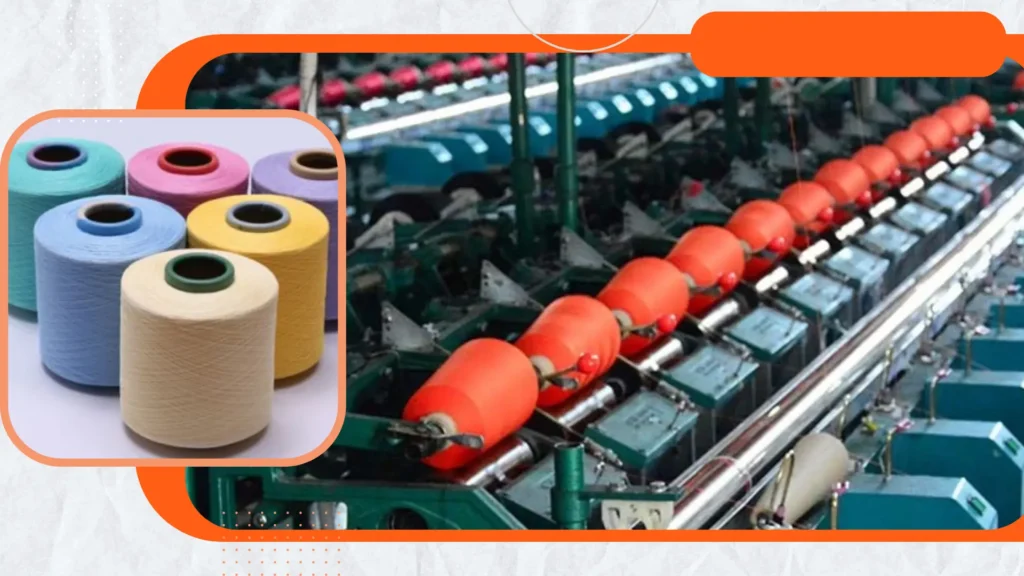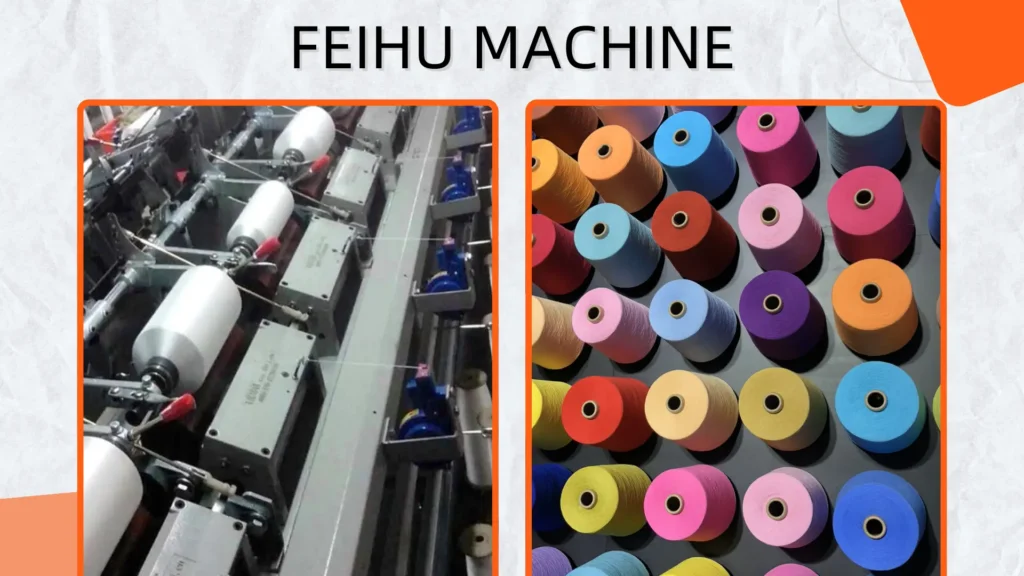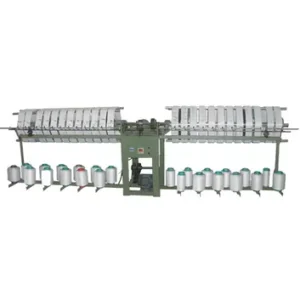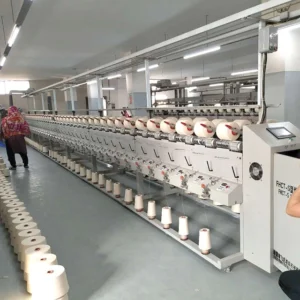The textile industry is undergoing a transformation as sustainability becomes a top priority for manufacturers and consumers alike.
Automation technology plays a crucial role in this shift, enabling more efficient, eco-friendly, and cost-effective production processes.
However, with so many automation options available, selecting the right technology for sustainable textile production can be challenging.
This article provides a comprehensive guide to help manufacturers choose the most appropriate automation solutions that align with their sustainability goals, improve operational efficiency, and reduce environmental impact.
What Types of Automation Technologies Are Available for Textile Production?
Robotic Systems
Robotic systems can handle repetitive tasks such as cutting, sewing, and fabric handling with precision and speed.
These systems reduce labor costs and improve production efficiency while minimizing errors.
Robotic arms equipped with advanced sensors can accurately cut fabric patterns, reducing material waste and ensuring consistent quality.
Robotic systems are also highly adaptable, allowing manufacturers to reprogram them for different tasks, making them a versatile solution for various stages of textile production.
Automated Weaving and Knitting Machines
Advanced weaving and knitting machines automate the creation of fabrics, allowing for intricate designs and consistent quality. These machines also reduce material waste by optimizing yarn usage.
Computerized knitting machines can create complex patterns with minimal yarn waste, ensuring that every thread is used efficiently.
Automated weaving machines can produce high-quality fabrics at a faster rate than manual methods, increasing production capacity while maintaining sustainability standards.
These technologies are particularly valuable for manufacturers looking to produce high-quality textiles with minimal environmental impact.
Digital Printing Technologies
Digital printing automates the dyeing and patterning process, reducing water and chemical usage compared to traditional methods. This technology supports sustainable production by minimizing environmental impact.
Digital printers can apply dyes directly to fabric with precision, eliminating the need for excessive water and chemicals used in conventional dyeing processes.
Additionally, digital printing allows for on-demand production, reducing overproduction and waste.
By adopting digital printing technologies, manufacturers can create vibrant, high-quality textiles while adhering to sustainability principles.
And More:
- How Can Textile Factories Reduce Their Carbon Footprint?
- Top 10 Textile Machinery Manufacturers in China
- Top 5 Yarn Twisting Machine Manufacturers in China
How Can Automation Reduce the Environmental Impact of Textile Production?
Minimizing Water Usage
Automated dyeing and finishing systems use water more efficiently, significantly reducing water consumption.
This is particularly important in regions facing water scarcity. For example, automated dyeing machines can recycle and reuse water within the system, minimizing the amount of fresh water required.
By reducing water usage, manufacturers can lower their environmental impact and contribute to the conservation of this vital resource.
This is especially critical in the textile industry, which is known for its high water consumption.
Reducing Chemical Waste
Automated systems can precisely control the application of dyes and chemicals, minimizing excess usage and reducing harmful waste.
This contributes to cleaner production processes and safer working environments.
Automated dispensing systems can measure and apply the exact amount of dye needed, preventing overuse and reducing chemical runoff.
By minimizing chemical waste, manufacturers can reduce their environmental footprint and comply with stricter environmental regulations, enhancing their reputation as sustainable businesses.
Cutting Down on Fabric Waste
Automated cutting machines optimize fabric usage by arranging patterns more efficiently. This reduces fabric waste and maximizes the use of raw materials, supporting sustainable production practices.
Computer-controlled cutting machines can analyze fabric rolls and arrange patterns to minimize gaps, ensuring that every inch of material is used effectively.
This not only reduces waste but also lowers production costs, making it a win-win solution for manufacturers and the environment.
What Factors Should Manufacturers Consider When Choosing Automation Technology?
Production Volume and Scale
The scale of production is a critical factor in selecting automation technology. High-volume manufacturers may benefit from fully automated systems, while smaller operations might prefer semi-automated solutions.
A large-scale textile factory might invest in fully automated weaving machines to handle high production volumes, while a smaller workshop might opt for semi-automated cutting machines that require some manual intervention.
Understanding production needs helps manufacturers choose the right level of automation to maximize efficiency and sustainability.
Initial Investment and ROI
Automation technology often requires a significant upfront investment.
Manufacturers should evaluate the return on investment (ROI) by considering factors such as labor savings, reduced waste, and increased production efficiency.
While the initial cost of an automated dyeing machine might be high, the long-term savings from reduced water and chemical usage can justify the investment.
Manufacturers should also consider potential government incentives or grants for adopting sustainable technologies, which can offset initial costs and improve ROI.
Compatibility with Existing Systems
New automation technologies should integrate seamlessly with existing production systems to avoid disruptions.
Manufacturers should assess compatibility and ensure that the new technology can be easily incorporated into their workflow.
An automated fabric inspection system should be compatible with existing conveyor belts and quality control processes.
By ensuring compatibility, manufacturers can avoid costly downtime and ensure a smooth transition to automated systems.
How Does Automation Support Sustainable Material Usage?
Optimizing Raw Material Consumption
Automated systems can precisely measure and allocate raw materials, reducing overuse and waste. This optimization supports sustainable material usage and lowers production costs.
Automated yarn dispensers can measure the exact amount of yarn needed for each product, minimizing excess usage.
By optimizing raw material consumption, manufacturers can reduce their environmental impact and improve resource efficiency, contributing to a more sustainable textile industry.
Enabling Recycling and Upcycling
Automation can facilitate the recycling and upcycling of textiles by sorting and processing waste materials more efficiently. This contributes to a circular economy by turning waste into valuable resources.
Automated sorting systems can separate different types of fabric waste, making it easier to recycle or upcycle materials into new products.
By incorporating recycling and upcycling into their production processes, manufacturers can reduce waste and create new revenue streams, enhancing their sustainability efforts.
Supporting Sustainable Sourcing
Automated tracking systems can monitor the origin and sustainability of raw materials, ensuring compliance with environmental standards and certifications.
Blockchain-based tracking systems can provide transparency into the supply chain, allowing manufacturers to verify that materials are sourced sustainably.
By supporting sustainable sourcing, manufacturers can build trust with consumers and differentiate themselves in the market as environmentally responsible businesses.
What Role Does Data and AI Play in Sustainable Automation?
Predictive Maintenance
AI-powered systems can predict equipment failures and schedule maintenance, reducing downtime and extending the lifespan of machinery. This minimizes waste and supports sustainable operations.
Sensors embedded in machinery can monitor performance and alert operators to potential issues before they cause breakdowns.
By implementing predictive maintenance, manufacturers can reduce waste, lower repair costs, and ensure continuous production, contributing to a more sustainable operation.
Real-Time Monitoring and Optimization
Data analytics enable real-time monitoring of production processes, allowing manufacturers to identify inefficiencies and optimize resource usage. This leads to more sustainable and cost-effective production.
Real-time data on energy consumption can help manufacturers adjust machine settings to reduce energy usage.
By leveraging data analytics, manufacturers can make informed decisions that enhance efficiency and sustainability, ensuring that resources are used responsibly.
Demand Forecasting
AI can analyze market trends and predict demand, helping manufacturers produce only what is needed. This reduces overproduction and minimizes waste, aligning with sustainability goals.
AI algorithms can analyze sales data and predict future demand for specific products, allowing manufacturers to adjust production levels accordingly.
By avoiding overproduction, manufacturers can reduce waste, lower storage costs, and improve resource efficiency, contributing to a more sustainable business model.
How Can Manufacturers Ensure a Smooth Transition to Automation?
Conducting a Needs Assessment
A thorough assessment of production processes and sustainability goals helps manufacturers identify the most suitable automation technologies.
This ensures that the chosen solutions align with their specific needs.
A needs assessment might reveal that a manufacturer requires automated cutting machines to reduce fabric waste or robotic systems to improve sewing efficiency.
By understanding their unique requirements, manufacturers can select the right automation technologies to achieve their sustainability goals.
Partnering with Reliable Technology Providers
Collaborating with experienced automation providers ensures access to high-quality technology and ongoing support.
This partnership is essential for successful implementation and long-term operation.
For instance, a reliable provider can offer customized solutions tailored to a manufacturer’s specific needs, from initial installation to ongoing maintenance.
By partnering with trusted providers, manufacturers can ensure that their automation systems operate efficiently and effectively, supporting their sustainability efforts.
Phased Implementation
A phased approach to automation allows manufacturers to test and refine systems before full-scale deployment.
This reduces risks and ensures a smoother transition. For example, a manufacturer might start by automating a single production line before expanding to the entire facility.
This phased approach allows for adjustments and improvements, ensuring that the automation system meets the manufacturer’s needs and sustainability goals.
What Are the Long-Term Benefits of Automation for Sustainable Textile Production?
Reduced Environmental Impact
Automation significantly lowers resource consumption, waste generation, and emissions, contributing to a more sustainable textile industry.
Automated systems can optimize water and energy usage, reducing the environmental impact of production processes.
By adopting automation, manufacturers can minimize their carbon footprint and contribute to a healthier planet, aligning with global sustainability goals.
Increased Competitiveness
Manufacturers that adopt automation can produce high-quality products more efficiently, giving them a competitive edge in the market.
Automated systems can increase production speed and consistency, allowing manufacturers to meet customer demand more effectively.
By leveraging automation, manufacturers can enhance their competitiveness and position themselves as leaders in sustainable textile production.
Enhanced Brand Reputation
By embracing automation for sustainable production, manufacturers can enhance their brand reputation and attract eco-conscious customers.
A brand that uses automated systems to reduce waste and lower emissions can market itself as environmentally responsible, appealing to consumers who prioritize sustainability.
By building a strong brand reputation, manufacturers can increase customer loyalty and drive long-term success.
Conclusion
Selecting the appropriate automation technology is a critical step toward achieving sustainable textile production.
By enhancing efficiency, reducing waste, and lowering environmental impact, automation offers significant benefits for manufacturers and the planet.
While challenges such as high initial costs and workforce training exist, the long-term advantages of automation far outweigh these hurdles.
As the textile industry continues to evolve, automation will play a pivotal role in driving sustainability and ensuring a greener future.
By making informed decisions and investing in the right technologies, manufacturers can lead the way in sustainable textile production.












